Exploring the Unique Qualities of Obsidian Stone
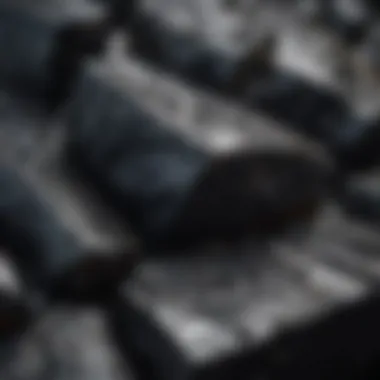
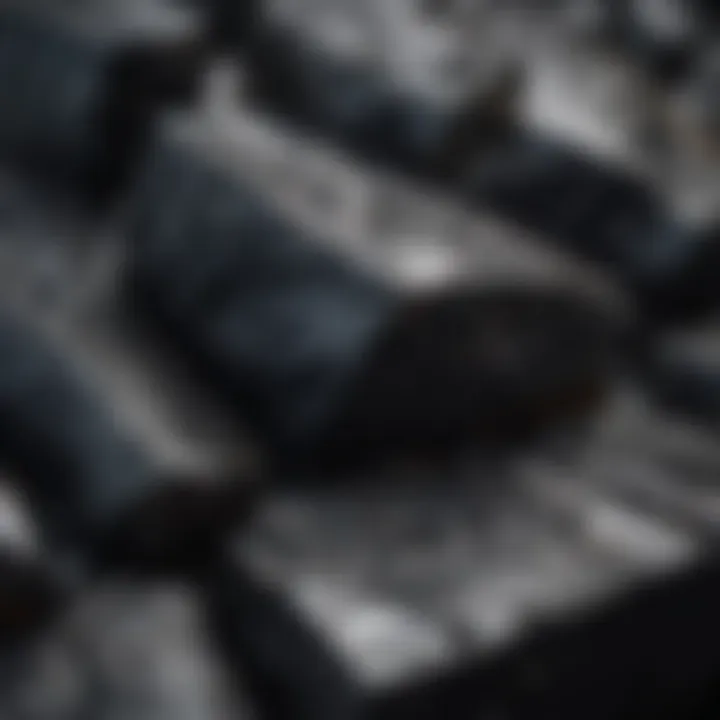
Intro
Obsidian, a naturally occurring volcanic glass, has fascinated humankind for centuries. Its smooth texture and shimmering beauty have not only made it a beloved collectible among rock and fossil enthusiasts but also a significant player in various cultural narratives throughout history. The allure of obsidian transcends mere aesthetics; it holds stories of ancient civilizations and has found its way into modern practices, from art pieces to natural healing.
Featured Collectible of the Month
Overview
Every month, we shine a light on a standout collectible that captivates both seasoned collectors and casual admirers alike. For this month, our spotlight is on obsidian stone. Its unique properties and diverse applications make it a compelling subject of interest. Whether it’s a striking centerpiece in a collection or an item used for its purported healing properties, obsidian is versatile. From pure black to rich mahogany shades, the variety it offers is impressive.
Historical Significance
Obsidian has been an essential resource since ancient times. It was pivotal in the development of tools, weaponry, and ornaments. Cultures such as the Aztecs and the ancient Greeks revered obsidian, crafting sharp tools from its edges and creating intricate jewelry pieces that are still admired today. The mobility and effectiveness of obsidian daggers were crucial in hunting and combat. In archaeological digs, remnants of obsidian tools often lead to fascinating insights into the lives and practices of our ancestors, illustrating a complex relationship with the earth.
Identification Techniques
Visual Characteristics
Identifying authentic obsidian can be tricky for novice collectors. Understanding its visual features is paramount. The most common types of obsidian range in color from deep black to green and even brown. A well-polished piece of obsidian will reflect light softly, showcasing its glassy texture. Some varieties may exhibit intricate patterns—such as the snowflake effect or a banded appearance—adding to their charm.
Resources for Identification
For those looking to deepen their understanding of obsidian and refine their identification skills, several resources come highly recommended:
- Wikipedia: A general guide on obsidian's properties and history. Visit Wikipedia.
- Britannica: Detailed entries covering geological and historical aspects of obsidian. See it on Britannica.
- Community Forums: Platforms like Reddit have thriving communities where you can ask questions and share insights.
"Obsidian not only tells the story of the earth’s changing landscape but also connects us with our past, making each piece a bridge across time."
Understanding these facets of obsidian can vastly improve one’s experience in both collecting and appreciating this remarkable stone. As we explore obsidian through this guide, we will delve deeper into its geological formation and practical uses, providing both historical context and contemporary relevance.
Prelude to Obsidian Stone
Obsidian, often referred to as volcanic glass, is not just a rock; it’s a remarkable blend of natural history, art, and practical utility. This stone has captivated human interest for centuries, weaving its way through different cultures, art forms, and trades. Understanding obsidian is essential for anyone considering its versatile applications, as it spans decorative arts to therapeutic practices. Delving into the topic sets the backdrop for appreciating its multifaceted appeal.
Definition and Characteristics
Obsidian is formed when lava cools rapidly after a volcanic eruption, solidifying without crystallization. Its smooth surface and mesmerizing sheen can reflect light in ways that create stunning visual effects. Colors range from deep black to browns, greens, and even reds, depending on the mineral content and internal structures. Notably, it often exhibits a glass-like texture, earning it admiration as a cutting and slicing tool since ancient times.
Some key characteristics of obsidian include:
- Hardness: It ranks relatively high on the Mohs scale, typically around 5 to 5.5, which makes it capable of taking sharp edges.
- Brittleness: Despite its hardness, obsidian can chip easily, which is essential to consider for both functional tools and decorative artifacts.
- Luster: Its glassy luster adds to its aesthetic appeal, making it a preferred choice in decorative jewelry and artifacts.
In short, obsidian is not just a pretty stone; its physical attributes make it significant across various applications.
Formation and Geological Background
Geologically speaking, the creation of obsidian is tied closely to volcanic activity. This stone forms primarily in subduction zones where tectonic plates converge. When the magma from the Earth’s mantle rises and erupts, it can cool swiftly in air or water, bypassing the crystallization process and solidifying into the smooth, shiny rock we know.
The geological processes involved are fascinating. Different factors contribute to the formation of unique varieties of obsidian:
- Temperature: Higher temperatures of molten rock lead to properties that affect the stone’s eventual look and feel.
- Cooling Rate: Rapid cooling results in glassy obsidian, while slower cooling may allow for some crystallization, leading to different textures.
- Impurities: Elements within the lava, such as iron or magnesium, can influence the color and appearance of the obsidian.
Understanding these geological foundations not only enriches appreciation but also informs collectors and enthusiasts about sourcing, usage, and care under specific environmental conditions.
Historical Significance of Obsidian

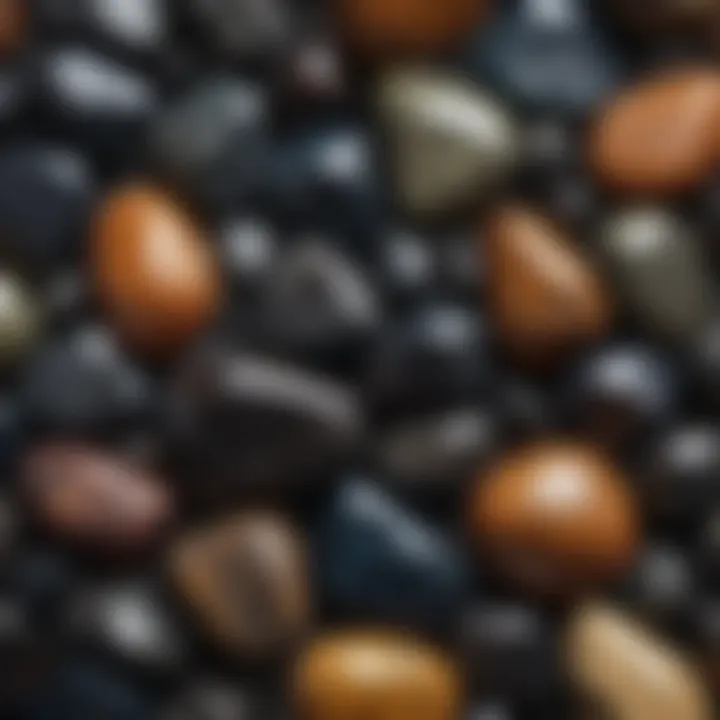
Obsidian has been more than just a striking stone; its historical relevance weaves through the tapestry of human civilization. This volcanic glass carries stories not just of geological formations, but of human ingenuity, culture, and survival. The significance of obsidian transcends its mere presence, embodying ancient rituals, practical tools, and symbolic meanings across various civilizations.
Use in Ancient Civilizations
In the dawn of human history, when the world was still young and untamed, obsidian played an essential role. Civilizations relied on this remarkable stone due to its unique properties. Its sharp edges made it an invaluable resource for creating tools and weapons, serving as a pivotal material for early humans.
- Mesoamerica: In regions like modern-day Mexico, the Olmecs used obsidian to create ritualistic tools and sharp blades. This material was key in agriculture and daily tasks but also found sacred applications in ceremonial contexts.
- Old World Societies: The Egyptians and Mesopotamians understood the value of obsidian as well, creating reflective surfaces for cosmetics and pots. Its dark, glossy surface symbolized power and sophistication.
- European Prehistory: Obsidian was used by prehistoric people in Europe, which suggests trade routes extended further than previously considered. It's intriguing that this stone connected disparate cultures, showing how essential it was even before written records appeared.
The reliance on obsidian for practical and ceremonial uses illustrates not just a technological leap but a profound understanding of natural resources. Early civilizations shaped their surroundings with it, creating a lasting legacy.
Cultural Relevance Across Cultures
The cultural relevance of obsidian extends well beyond its functionality. Across different societies, obsidian has found diverse applications ranging from art to spirituality. Through the ages, it became imbued with meanings that resonated deeply within various cultures.
- Symbol of Protection: In various cultures, obsidian was often regarded as a protective stone. Many believed that it could ward off negativity and enhance the intuition of wearers.
- Artistic Expression: Indigenous peoples, particularly in North America, utilized obsidian not only for tools but also for crafting intricate art pieces. The unique aesthetics of this stone turned it into a canvas upon which creativity flourished.
- Ritualistic Significance: In some cultures, performance involving obsidian was believed to invoke the spirits or connect people to their ancestors, giving it a sacred aura that transcended the physical realm. The Aztecs, for instance, incorporated obsidian in their rituals and sacrifices, further cementing its importance in the spiritual landscape.
"Obsidian, with its mesmerizing sheen and deep historical roots, is more than a stone; it is a mirror reflecting the complexity of human culture."
The rich and varied uses of obsidian reflect how cultures navigate the interplay between nature and meaning. Its distinctive characteristics allowed it to take on roles that shaped not just functional aspects, but also the very essence of identity for many civilizations. As we explore this fascinating stone's past, it is apparent that its historical significance is as complex as the obsidian itself.
Properties and Varieties of Obsidian
Understanding the properties and varieties of obsidian is key to appreciating its multifaceted nature. Obsidian isn't just a pretty stone; it's a geological marvel with a rich tapestry of history and contemporary relevance. The different types of obsidian, each bearing its own unique characteristics, offer a variety of options for collectors, artists, and healers alike. By diving into these properties, enthusiasts can make informed choices about what types of obsidian to seek based on the unique benefits each variety provides.
Types of Obsidian
Black Obsidian
Black obsidian stands as a staple in the world of gemstones and tools. Its deep, inky color isn't merely for aesthetics; it’s known for its protective qualities against negativity. Collectors thread its beauty and strength into various jewelry designs or use it in spiritual practices. A defining feature of black obsidian is its glass-like surface, which brings an unparalleled luster that catches the eye. However, it's crucial to mention that this type can be relatively brittle, meaning careful handling is advised to prevent chipping or cracking. Whether you're crafting an art piece or simply enjoying it in its raw form, black obsidian serves as a powerful, versatile choice.
Snowflake Obsidian
Snowflake obsidian is quite different, with its distinctive white or gray patterns resembling snowflakes set against a black backdrop. This striking contrast not only makes it visually appealing but also represents balance and harmony. It is often favored for its calming energies, ideal for those who seek mental clarity and emotional stability. The unique feature of snowflake obsidian is that it also helps in identifying unhealthy patterns in one’s life, which can prove advantageous in therapy sessions or personal development. However, this stone, while beautiful, also shares the brittleness of its black cousin, adding to the need for cautious use.
Rainbow Obsidian
Another variety worth mentioning is rainbow obsidian, which brings forth an array of colors when viewed in the right light. The iridescent qualities offer a mesmerizing shift in color, representing emotional healing and transformation. Collectors are drawn to its beauty as well as its reputed healing properties. It serves as a mirror to the soul, helping to unveil and heal wounds. Though captivating, the shine can be a bit challenging to maintain if exposed to harsh environments or scratches, so handling with care is necessary.
Mahogany Obsidian
Mahogany obsidian, with its rich brown hues and red swirls, brings a unique touch that many collectors cherish. Its earthy tones offer a grounding effect, making it a popular choice for those interested in enhancing their connection to the Earth. This stone helps in manifesting desires and cultivating strength. The unique feature of mahogany obsidian is its historical use in various cultures for craftsmanship and tool making. While its durability makes it a strong candidate for long-lasting pieces, care must still be taken during rough handling, as it can show scratches more easily than other types.
Physical and Chemical Properties
On the scientific front, obsidian is classified as a volcanic glass formed from rapidly cooled lava. Its composition primarily consists of silica, although variations in color and pattern arise from differing impurities. Physically, obsidian is characterized by a smooth, glassy texture. The hardness level of 5 to 5.5 on the Mohs scale makes it somewhat resilient, but it can fracture easily along conchoidal lines, which are smooth, curved surfaces resulting from its volcanic origins.
In summary, selecting an obsidian stone involves more than just aesthetic appeal. Understanding the diverse properties and varieties helps in appreciating their unique contributions to art, healing practices, and personal collection. Each type brings its own characteristics and benefits, making obsidian a stone not just of beauty but also of functionality and significance.
The Contemporary Use of Obsidian
The contemporary use of obsidian reflects its versatility and significance in modern culture. As trends in jewelry, art, and even utilitarian applications evolve, this volcanic glass remains a sought-after material for its aesthetic appeal, strength, and unique properties. Collectors and enthusiasts often emphasize obsidian’s amalgamation of beauty and functionality, making it a fascinating focal point of contemporary craftsmanship.
Applications in Jewelry and Arts
Obsidian’s striking appearance makes it a favored choice among jewelry designers. The rich, glossy black surface lends itself well to various styles—from minimalist designs to elaborate statement pieces. In the realm of craft, artisans utilize different types of obsidian, such as snowflake obsidian or rainbow obsidian, to create visually captivating jewelry that speaks to individual tastes and preferences.
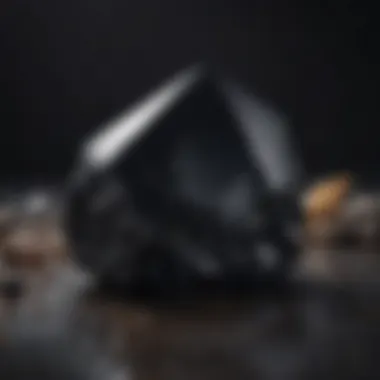
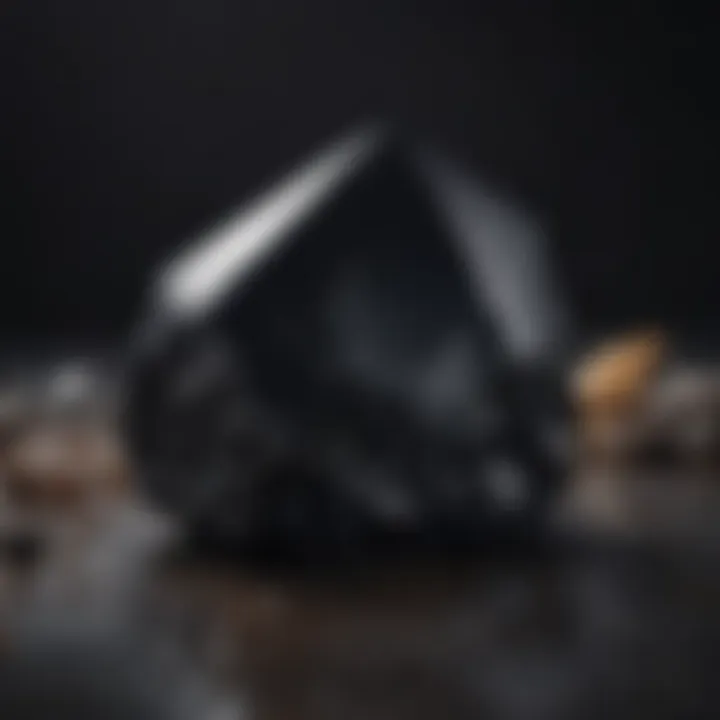
- Unique Aesthetic: Each piece of obsidian has its own iridescent nuances, creating an original look that’s different from mass-produced items.
- Natural Colors: The diversity in color, coupled with patterns like the snowflake effect, allows for a broad artistic expression.
- Cultural Significance: Some jewelry may incorporate historical symbolism, adding an emotional or spiritual layer that appeals to many buyers.
"Obsidian's interplay of light and texture creates pieces that feel both ancient and contemporary, bridging the old and new worlds."
Moreover, obsidian has found its way into various forms of art beyond just jewelry. Sculptors appreciate its ability to be finely crafted, producing detailed and intricate forms. Bowls, knives, and other decorative items highlight its dual nature—serving a purpose while being objects of beauty.
Obsidian in Modern Tool Making
Interestingly, obsidian is not just relegated to aesthetic pursuits; it holds a critical role in modern tool making as well. The strength and sharpness of obsidian edges are unrivaled by many synthetic materials, making it an excellent choice for precision instruments.
- Surgical Tools: Some medical professionals utilize obsidian blades for scalpel purposes. The glass can be ground to an ultra-fine edge, resulting in smoother incisions than traditional steel blades—importantly minimizing tissue damage.
- Survival Tools: Crafted obsidian tools are sought after by outdoor enthusiasts who appreciate traditional skills and natural materials. Knapping techniques, used to shape obsidian into functioning tools, have seen a resurgence as hobbies among survivalists and primitive technology advocates.
- Cultural Reenactments: Reenactors utilize obsidian tools to create authentic experiences that honor cultural histories and traditional craftsmanship.
Healing Properties and Spiritual Significance
Obsidian, often regarded as a stone of protection, carries with it a rich tapestry of metaphysical beliefs that weave through various cultures and contemporary practices. The dual aspect of its healing properties is noteworthy, as it not only serves to shield the user from negative energy but also acts as a powerful tool for emotional healing. This section will explore the underlying fascination with obsidian’s metaphysical attributes and its applications within alternative medicine, offering insights valuable to rock and fossil collectors and spiritual enthusiasts alike.
Metaphysical Attributes
When it comes to metaphysical properties, obsidian is commonly associated with grounding and purging. Many believe that this stone catalyzes introspection, encouraging individuals to reflect deeply on their emotions and experiences. Its dark, glossy surface is said to symbolize the hidden depths of the psyche. Practitioners often utilize obsidian during meditation, as it purportedly aids in accessing subconscious thoughts.
Some specific attributes include:
- Protection: Obsidian is often heralded for its ability to form a protective shield against negativity. It’s believed to deflect emotional and psychic attacks.
- Grounding: The stone's deep black color helps anchor one's mind in the present, which can be particularly beneficial during times of uncertainty.
- Clarity: Many users report enhanced clarity of thought, helping them navigate complex feelings or situations.
It's worth noting that the effectiveness of obsidian—like many metaphysical stones—can vary from person to person. Some might find that holding a piece of this stone during moments of stress brings about tranquility, while others might feel more energized and focused.
"Obsidian not only protects but reveals; it shines light onto the shadows that we often ignore."
Uses in Alternative Medicine
In the realm of alternative medicine, obsidian is employed in various practices aimed at healing both physical and emotional ailments. Some alternative therapists utilize the stone's reputed powers during massages or body work, claiming that touching obsidian against the skin may assist in detoxifying the body of negative energies or stress.
Common applications include:
- Energy Work: Practitioners may incorporate obsidian in energy healing sessions to enhance the flow of positive energy while blocking harmful vibrations. Some believe it stabilizes the flow of energy in the body.
- Crystal Healing: In crystal healing, obsidian is often placed on specific areas of the body, such as the chakra centers, to stimulate healing and release emotional blockages.
- Massage Therapy: Heated obsidian stones are sometimes used in massage therapy for soothing tired muscles and invigorating the spirit, with the added belief of its detoxifying properties.
In essence, obsidian serves as more than just a beautiful geological specimen; it represents a bridge between the material and spiritual worlds, offering diverse paths for personal growth and healing. By understanding these nuances, rock and fossil collectors can appreciate not only the physical attributes of obsidian but also its multifaceted role in wellness and spirituality.
Purchasing Obsidian: Key Considerations
When it comes to acquiring obsidian, there's a lot more to consider than just its shimmering surface. The process of buying this unique stone calls for careful thought and discernment. It isn't just about choosing a pretty piece; it involves understanding where to buy, knowing how to evaluate authenticity, and recognizing the quality of what you’re considering. Obsidian is not merely a decorative object; it holds historical, cultural, and spiritual significance, making its proper selection crucial for collectors and enthusiasts alike.
Where to Buy Authentic Obsidian
Online Retailers
When discussing online retailers, the sheer convenience cannot be understated. You can browse through a treasure trove of options right from the comfort of your sofa. These platforms often offer detailed descriptions and photographs that aide in making informed choices. However, one must be cautious. While major sites provide extensive inventory, the quality can vary widely. It's essential to choose reputable retailers known for their authenticity, such as Etsy or specialized gemstone shops. One unique feature of online shopping is the opportunity to access a wider array of types and colors, sometimes even rare finds that local shops may not carry. Just remember to look out for customer reviews—you can learn a lot from others’ experiences.
Local Craft Shows and Markets
Local craft shows and markets act as vibrant hubs where creativity meets craftsmanship. Buying obsidian here has its perks; meeting the artisans and asking questions about their work adds a personal touch. You can hear stories tied to each piece, adding depth to your purchase. This setting typically allows you to inspect the stone more closely, assessing its weight and shine—something that's hard to gauge online.
The downside? Selection may not be as vast. Not every craft show will have obsidian, and prices might be on the higher side due to the artisanal aspect. Still, if you have a love for supporting local artists, this can be a fulfilling choice.
Specialty Mineral Shops


Visiting specialty mineral shops feels like stepping into a world dedicated solely to the earth's treasures. These stores often carry a wide variety of gemstones, including various forms of obsidian. Staff usually possess an admirable depth of knowledge, ready to share details about each specimen's origins and characteristics. You’re not just buying a stone; you’re buying a story along with it.
While specialty shops are excellent for quality assurance, their prices can sometimes reflect the expertise and care involved in sourcing their products.
"Choosing obsidian is not just about aesthetics; it's about connection and purpose."
It’s a balancing act—whether you go online, hit up a local market, or explore a specialized store, your final choice can shape your collection's character significantly.
Evaluating Quality and Authenticity
Evaluating the quality and authenticity of obsidian is essential. There are a few key aspects to pay attention to:
- Appearance: Look for a deep, glossy sheen characteristic of natural obsidian. Any bubbles or inconsistencies may indicate a synthetic or lower-quality product.
- Weight: Obsidian tends to feel heavier than it looks. If it feels light, you might want to question its authenticity.
- Inclusions: Some varieties, like snowflake obsidian, will have snowflake-like inclusions, while others might showcase bands of color. Familiarize yourself with the specific types you’re interested in, as this knowledge aids in identification.
- Certification: Whenever possible, ask for documentation or certificates validating the stone’s origin. This becomes especially important if your purchase is a significant investment.
Making informed decisions about where and how to purchase obsidian is fundamental. With the right approach, you can navigate the market confidently and enhance your collection with genuine pieces.
Care and Preservation of Obsidian
Caring for obsidian is not just about keeping it shiny; it's also about preserving its integrity and value over time. Being a natural volcanic glass, obsidian can be somewhat delicate compared to other gems. Understanding how to maintain and store this stone is crucial for collectors and enthusiasts. Proper care can significantly extend its lifespan and ensure that its beauty remains intact. Here, we'll dive into maintenance tips and effective storage techniques that every obsidian owner should know.
Maintenance Tips for Longevity
To keep your obsidian pieces looking their best, a few straightforward maintenance practices can go a long way. Here are some essential tips:
- Regular Cleaning: Simply using a soft, damp cloth to wipe down your obsidian can remove dust and fingerprints. Avoid harsh chemicals or abrasive materials, as they can scratch or damage the surface.
- Avoid Direct Sunlight: Just like a vampire avoids sunlight, obsidian doesn’t fare well under strong UV light. Over time, the colors may fade or distort. Store your obsidian in a cool, shaded place.
- Limit Exposure to Heat: Owing to its glassy nature, obsidian can crack if subjected to high heat variations. Keep it away from radiators or places where temperatures fluctuate significantly.
- Inspect Regularly: Make it a habit to examine your obsidian for any chips or cracks. Early detection can save you a heap of trouble in the long run. If you spot any issues, consider consulting professionals for repairs.
Here’s a simple list of items you might need for cleaning your obsidian:
- Soft microfiber cloths
- Mild soap
- Warm water
Storage Techniques
Proper storage is just as important as maintenance. Here are some suggested techniques to keep your obsidian safe:
- Use Soft Pouches: When storing individual pieces, consider using soft fabric pouches or cloths to avoid scratches. This also provides a cushioning effect.
- Avoid Hard Surfaces: When displaying or storing your obsidian, ensure it’s placed on soft surfaces rather than hard metals or stones. This minimizes the risk of chipping.
- Designated Storage Boxes: Use a dedicated container with compartments that can separate different specimens, like a jewelry box or collection case. This way, you can also keep track of your collection easily.
- Maintain Humidity Levels: Obsidian is relatively resilient, but extreme humidity changes can affect its physical qualities. Utilize a climate-controlled environment if you live in an area with drastic temperature and humidity shifts.
"A little care goes a long way in maintaining the enchanting qualities of obsidian."
By adhering to these maintenance and storage practices, obsidian lovers can keep their cherished pieces in pristine condition for years to come. A little bit of effort can save you from potential heartaches later on. Remember, it’s not just a stone; it’s a slice of history and nature.
Finale: The Timeless Allure of Obsidian
The narrative of obsidian stretches beyond mere geological curiosity; it's a stone that weaves together stories of ancient cultures and modern applications. This guide aimed to illuminate the multifaceted aspects of obsidian, from its striking aesthetics to its profound significance in history and the healing arts. Each section unveiled vital insights, paving a coherent path that spans centuries of human interaction with this mesmerizing material.
In the realm of decorative arts, obsidian's sleek, glass-like finish and assorted colors present endless possibilities for artisans and collectors. Jewelery designers use it to create statement pieces that attract attention and evoke historical resonance. Additionally, the scientific applications — particularly in tool making — showcase a unique blend of both form and function, reminding us of our ancestors’ ingenuity.
Moreover, the spiritual dimension of obsidian cannot be overlooked. Believers herald it for its supposed grounding properties, enhancing one’s sense of stability while warding off negativity. Such attributes elevate the stone’s value, extending its significance beyond physical beauty. As one might observe, obsidian captivates diverse audiences, from miners and gemologists to spiritual guides and enthusiasts.
Engaging with obsidian opens doors to a deeper understanding of our connection with nature and history. Embracing its complexity can serve as a reminder of our interplay with the Earth’s resources, urging us to appreciate and protect these wonders. As collectors and enthusiasts delve deeper into the obsidian experience, they will find themselves enriched by its narratives and inherent beauty.
Recap of Essential Insights
- Geological Importance: Obsidian is not just visually striking; it holds significance in geology as an indicator of volcanic activity.
- Cultural Impact: Ancient civilizations revered obsidian as a tool for survival and artistry, impacting cultural practices significantly.
- Variety: The wide range of types, including Black Obsidian and Snowflake Obsidian, appeals to both casual collectors and dedicated enthusiasts.
- Modern Applications: Beyond aesthetic uses, obsidian is integral in contemporary tool making, demonstrating its enduring utility.
- Spiritual Significance: Many believe in the healing properties of obsidian, enhancing its appeal within alternative medicine practices.
Encouragement for Collectors and Enthusiasts
For anyone navigating the world of obsidian, whether new or experienced, the excitement never wanes. Take the plunge into collecting. Each piece tells a story and connects you to a rich tapestry of human history. Attend local craft shows, join forums, and engage with communities online, such as those on Reddit or Facebook.
Look for variations in hue and patterns; the uniqueness of your finds can be a real conversation starter.
Moreover, do not be shy about asking questions and seeking out reputable sources to ensure authenticity. Take pride in your collection — it's more than a simple hobby; it's a deep exploration into the intricate layers of human history and accomplishment.
"Collecting obsidian is like time travel. Each piece is not only a fragment of the earth's history but also a slice of human creativity and survival."
As you embark on—or continue—this journey, remember to relish each discovery. From understanding the geological origins to cherishing the crafted artifacts, obsidian always has more to share.



